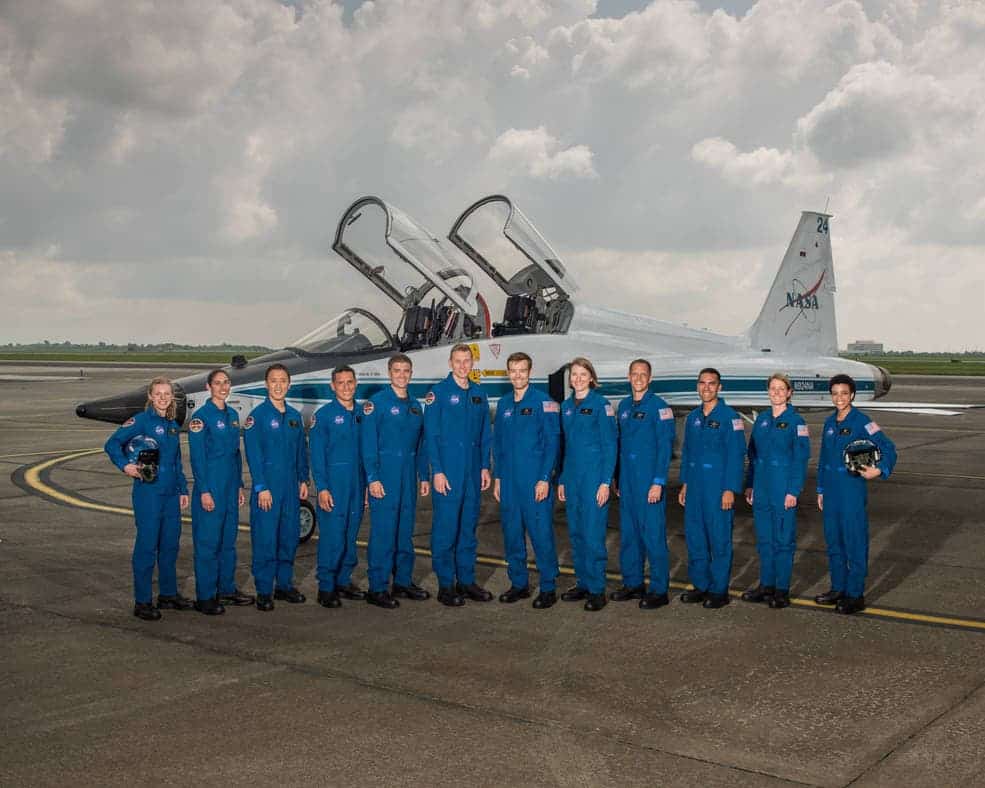Take a good look at these people. A few years from now, they will be conducting research off the Earth and in deep space.

NASA has selected its largest astronaut class since 2000, after they received over 18,300 applicants. It’s encouraging that the number of applications continues to grow, as Americans (and people in general) seem to be more interested in the space race than they were in the past few years. NASA handpicked 12 men and women for the task, which adds up to a total of 350 astronauts selected since the original Mercury 7 in 1959 — more than any other country.
“These are 12 men and women whose personal excellence and whose personal courage will carry our nation to even greater heights of discovery and who I know will inspire our children and our grandchildren every bit as much as your forebears have done so in this storied American program,” said Vice President Pence. “And to this newest class of astronauts, it’s my honor to bring the sincere congratulations of the 45th President of the United States of America, President Donald Trump. Your President is proud of you, and so am I.”
The astronauts were aged 29-42, a quite broad range which no doubt will give hope to many people worldwide (including yours truly). Many of them hail from a military background, but not all of them — which again, should give a lot of people hope.
The new astronauts will now return to their regular lives, until August, when they will begin their two-year training stage. According to NASA, they will be performing a number of varied tasks, including research on the International Space Station, launching from American soil on spacecraft built by commercial companies, and departing for deep space missions on NASA’s new Orion spacecraft and Space Launch System rocket.
“These women and men deserve our enthusiastic congratulations,” said astronaut and Johnson Space Center Director Ellen Ochoa. “Children all across the United States right now dream of being in their shoes someday. We here at NASA are excited to welcome them to the team and look forward to working with them to inspire the next generation of explorers.”
If you’re wondering what the requirements for astronauts are, NASA has a clear list. In order to become an astronaut, you must first decide what branch you aim. There are a few possibilities, all of which require you to be quite fit and overall healthy (nothing too fancy).
1. Commander and Pilot Astronaut.
The pilot, as the name implies, assists the commander in controlling and operating the vehicle. The basic requirements are:
- A bachelor’s degree from an accredited institution in engineering, biological science, physical science, or mathematics. An advanced degree is desirable, and a prolific career certainly helps.
- At least 1,000 hours pilot-in-command time in jet aircraft. Flight test experience is also a plus.
- Ability to pass a NASA space physical test (height between 62 and 75 inches/1.57 to 1.9 meters, blood pressure of 140/90 measured in a sitting position, a distant visible acuity of 20/100 or better uncorrected, correctable to 20/20 each eye).
This is perhaps the most difficult and military-intensive path. But there are alternatives:
2. Mission Specialist Astronaut
You will interact with the rest of the crew in the areas of crew activity planning, consumables usage, and experiment and payload operations.
The physical requirements are similar as for the pilot, though a broader range of height is permitted here (58.5 to 76 inches / 1.48 to 1.93 meters). However, there are no flight experience requirements. More emphasis is placed on the scientific qualification of the applicant.
3. Payload Specialists
Not technically NASA astronauts, this can include foreign nationals specialized in onboard duties. They are not part of the Astronaut Candidate Program, but can be nominated by the appropriate Investigator Working Group (IWG), the foreign sponsor, or the designated payload sponsor. They may be added to shuttles in some scenarios.
You can read a full description of these 12 talented people at NASA‘s website. For now, we’d like to extend our warmest congratulations to this new generation of astronauts. Their role in the advancement and popularization of science should never be underestimated, as we have all seen in the past decades. They have a difficult and very important mission ahead of them — and


